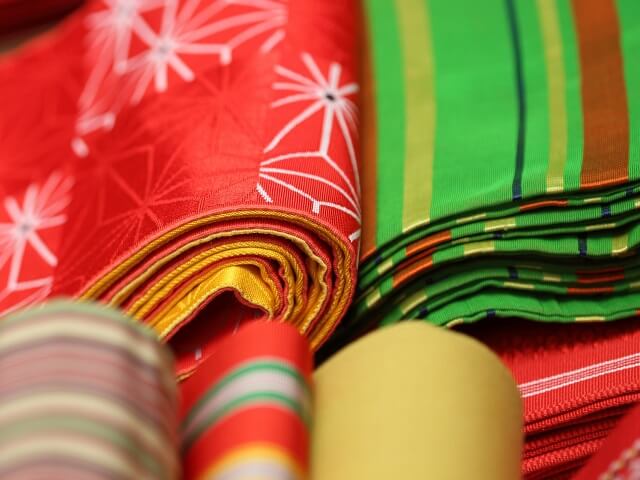-
- USA/Canada 1-800-285-2726
- Australia (02) 8006 4411
Featured on Select Quilt Festival Japan Tours vacation packages.
The Kyoto Shishu Restoration Studio is dedicated to repairing embroidery and traditional Japanese cloth pieces. The Studio is operated by Wakosha, a cleaning company that specializes in Kimono for Buddhist monks and restoring traditional embroidery works. Due to the fragile nature of aged embroidery and lack of professional restoration services, the studio receives up to 140 projects in need of repairs per year. The embroidery that comes through the doors are sometimes 100, 200, and even up to 300 years old. Therefore, the Kyoto Embroidery Restoration Studio employs only skilled embroidery specialists to restore the works in order to bring them back to life. These expert craftsmen work tirelessly using traditional techniques and their vast experience to bring the works back to their former glory. The restoration studio even handles some of the equipment used for Kyoto's Gion Festival.

Fascinated by the colorful kimono and decorative fabrics of Japan? Enjoy an up close look at the traditional tools and fabrics while watching the masters at work during our best-selling line of Quilt Japan Tours through the Kyoto Shishu Restoration Studio. You can also add this destination as a part of our Private Japan Tour Packages for a custom vacation experience with your favorite interests & destinations!
Shibori is the method of dyeing cloths.
Museum dedicated to preserving Kyoto's traditional and cultural works of art
Japanese Indigo dyeing and the Pure Vegetable Dyeing
research and restoration facility for ancient textiles and traditional weaving techniques
Most famous festival in Japan; festival of Yasaka Shrine
Premier Japanese Sewing Needles
Great Collection of Obi and Fabric
Recreated village where guests can enjoy a traditional atmosphere before trying Shibori tie-dyeing
The first and sole quilt museum established by Mutsuko Yawatagaki
Quilting specialist Mutsuko Yawatagaki's special work shop
A dyeing technique that was developed in Kyoto during the middle of the Edo-era towards the end of the 17th century
Kimono Show and Demonstrations.